|
One of the stipulations of the dramatic principle known as Chekov's Gun is that a gun shown in first act of a play should be fired in the last, a concept that has been turned around by movies to justify the life-saving, late-story use of any makeshift weapon by ensuring that the audience knows it was available all along and hasn't appeared out of nowhere. While this does help to quash any hint of deus ex machina about the convenient timing of the weapon's appearance, it also contributes to the air of predictability that dogs so many Hollywood movies. If the film opens with the lead character doing repairs to his house with a fearsome-looking nail gun, for example, then you can bet your bottom dollar that this very same device will make a villain-incapacitating reappearance later, probably in a climatic fight. It's because of this that when magician Gallico the Great introduces a trick of his invention in the 1954 The Mad Magician that involves strapping his assistant to a bench and appearing to sever her head with a gigantic buzz saw, I immediately geared up to see it put to violent use in the film's climax. As it turns out, this moment occurs long before even the film has reached its halfway mark and the saw's anticipated role in the climax is occupied instead by an even more spectacular death-cheating illusionary device.
Sometime in late 19th century America, Don Gallico (Vincent Price on fine form) is busy preparing for his first public performance as Gallico the Great. He's spent many years devising and constructing magic tricks for a company named Illusions Inc., and having watched others achieve fame on the back of his work, has decided to become a stage magician himself. He's convinced that his ‘Lady and the Buzz Saw' trick will be his ticket to Broadway, but just as he and his lovely assistant Karen (Mary Murphy) are about to perform the illusion for a packed house, he's served with an injunction by the boss of Illusions Inc., Ross Ormond (Donald Randolph), whose contract with Gallico gives him automatic ownership of anything his hapless employee creates. If that wasn't humiliating enough for Gallico, it emerges that his former wife Claire left him for Ormond before then abandoning him also to go gallivanting about town in search of someone even richer. The self-satisfied Ormond clearly enjoys rubbing Gallico's nose in his misfortune, which is how he finds himself getting horribly intimate with the fast-rotating teeth of the buzz saw blade.
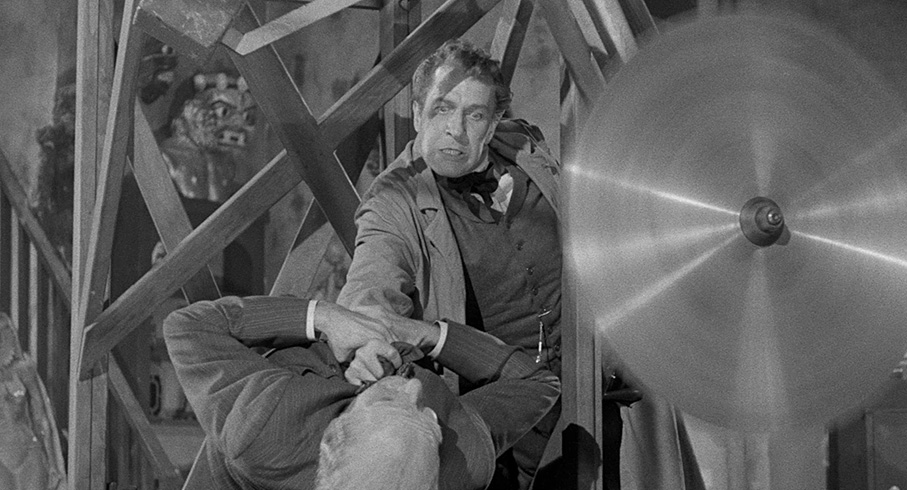
From this point on screenwriter Crane Wilbur – who also penned House of Wax, the film whose success gave birth to this one and whose influence on it can be keenly felt – bounces Gallico from one improbable contrivance after another. First he loses Ormond's freshly severed head when a visiting Karen unknowingly picks up the bag in which it is hidden after mistaking it for her own, which is identical in appearance. When Gallico finds Karen having dinner at a restaurant with her police lieutenant boyfriend Alan Bruce (Patrick O'Neal) and asks to exchange the bags, she realises that she doesn't have it with her anymore and that she must have left it in the cab she rode to get there. This sends a panicky Gallico scurrying across town in an effort to track down the cab driver, spurred on by Alan's reassurance that once discovered it will probably just be handed in to the police. And then there's the matter of Gallico's disguises. For reasons that are never made clear, he opens his first public performance not as himself but disguised as celebrated magician – and Illusions Inc. customer – The Great Rinaldi (John Emery). This proves to be another take on Chekov's Gun, a demonstration of Gallico's skill at creating lifelike face masks, one that he will later put to use to disguise himself as the departed Ormond. Quite why he does this is once again not explicitly stated, though it does give rise to a darkly ironic sequence in which Gallico-as-Ormond dresses the real Ormond's body as a Guy Fawkes-style dummy and, in full view of seemingly half the town, plonks it at the top of a celebratory bonfire and stands amongst the throng to watch it burn. Seemingly determined to further complicate matters, Gallico then takes a room at a boarding house run by Alice Prentiss (Lenita Lane) and her husband Frank (Jay Novello) whilst in his Ormond disguise but under the false name of Ward Jameson. Why? I'm not sure I know. The fact that Alice writes murder mysteries and Frank is fascinated by the discovery of human bones in the ashes of the celebration bonfire should probably act as more of a warning flag to Gallico than it apparently does. It's then that Gallico's ex-wife Claire (Eva Gabor) makes an unexpected reappearance, having run low on cash and is now looking for a husband who unbeknown to her has been disposed of by the very man she left him for in the first place. She even puts an ad in the newspaper asking if anyone has seen him, complete with a handy description of the man. Let's hope Alice and Peter don't happen upon it, given who they have staying in the upstairs guest room, or at least whom they think they have staying. All clear?
Credibility stretches abound here, but so driven is John Brahm's brisk direction and so engaging the performances (Lenita Lane, who appears to have drawn inspiration from Elsa Lanchester in eccentric mode, is a particular delight) that I found myself cooking up explanations for almost every seemingly unlikely turn of events. That Gallico and Karen have exactly the same medical bag, for example, I put down to them being bought at the same time at the same store by Gallico for himself and his assistant for the purpose of transporting materials to and from shows. I also found it easy to write off his decision to imitate The Great Rinaldi in his debut show as a deliberate dig at the man in whose shadow he had been forced to work for so long, performing amusing but unspectacular tricks as Rinaldi before appearing as himself to present the star piece of the show. His decision to disguise himself as Ormond could be seen as an attempt to cover up the fact that the man is dead, while the notion that people so readily fall for this disguise could be down to him not engaging with anyone who knew the real Ormond well enough to have formed a photographic memory of his face. It's a theory given credence when a person he theoretically shouldn't be able to fool sees through his disguise in a matter of seconds.
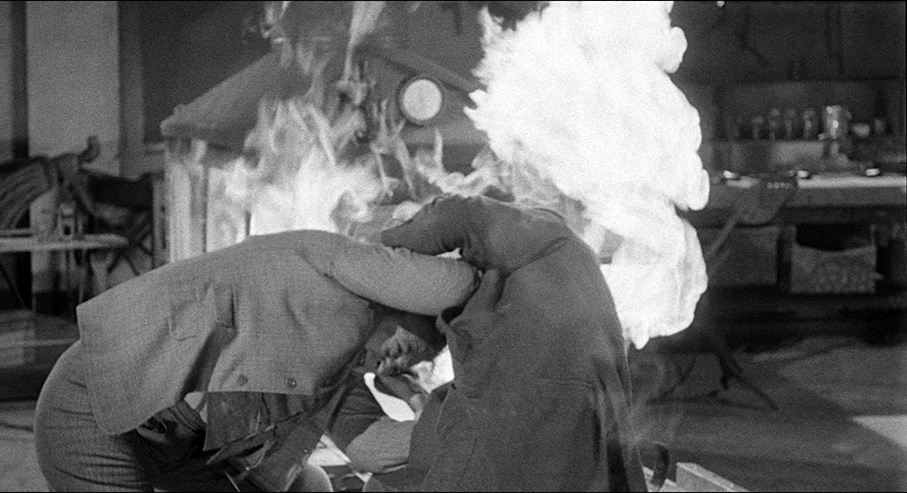
The introduction of a second potentially lethal magical trick in the shape of a glass-walled, crematorium-style furnace lays the grounds for a climax whose vigour and physicality includes a fight that apparently left Vincent Price with a broken nose. It also serves as a reminder of why, for all its marvels, CG can't compete with practical effects when it comes to creating a real sense of danger, as while watching two men wrestle just a couple feet from roaring computer-generated flames might prompt concern for the fate of the characters, seeing it done for real had me genuinely worried for the safety of the actors and their stunt doubles, despite knowing no-one was seriously hurt beyond a misjudged blow delivered to Vincent's hooter.
Over the course of the film Gallico is transformed from humiliated victim into vengeful monster, and while the usual complaint that the younger and prettier cast members we are then asked to root for aren't nearly as interesting as the villain also holds true here, Karen and Alan prove to be more likeable and engaging as characters than I was expecting. More surprising (and pleasing) is that when the chips really are down, the traditional roles of hero and princess are effectively reversed, and despite affirmative action taken by Alan, it's Karen and especially Alice who prove the most resourceful and effective. It also tips its hat to the science of the period setting in Alan's faith in the then-new technique of fingerprint identification in the face of his less-convinced superiors, and at one point Gallico bests an oponent using karate chops, a rare form of combat in films of this period.
That I wasn't able to conjure excuses for every suspect plot turn or dodgy contrivance didn't impact on my enjoyment a jot. Sure, the plotting occasionally stretches plausibility even within the frame of a fanciful drama, but this is still a well-played, briskly paced and occasionally quite gruesome (it's not what you see but what is implied) horror-tinged thriller that deserves to be seen as more than the likeable attempt to cash in on the success of its celebrated three-dimensional predecessor that it is sometimes dismissed as.
Having just stated that The Mad Magician is more than a simple House of Wax cash-in, there's no denying that the huge popularity and box-office success of that film was the principal reason that The Mad Magician was commissioned and why it was also shot in 3D. The Rita Belda-supervised Sony remaster that was the source for the transfer on Indicator's Blu-ray is actually two restorations, one of the 2D version and one of the 3D, both of which have been included on this disc. If you only have a regular Blu-ray player then the 2D version will play by default, but if you have a 3D-compatible player then you'll be offered the choice between the 2D and the 3D transfers. I've got quite a bit to say about the 3D one, or at least how I was able to watch it, but as most will be watching the film in 2D, let's deal with that first.
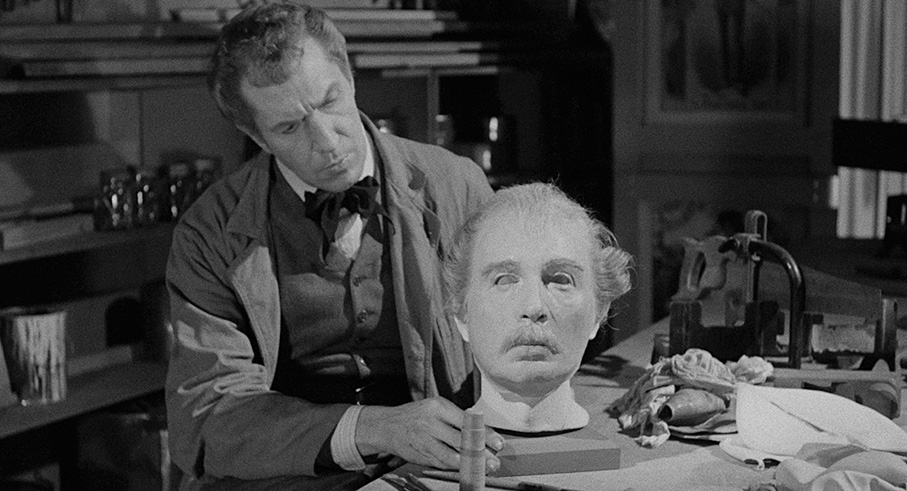
Framed in what I assume is the original aspect ratio of 1.85:1, the 1080p transfer here looks rather lovely. Detail is crisply rendered, the contrast is sumptuous in its range without softening the black levels or losing picture detail to shadows, and the image is clean of dust and damage and sits rigidly in frame with no hint of jitter. A fine film grain is clearly visible throughout. That said, just occasionally a shot comes along that seems a little soft, which I initially put down to the restoration being created from more than one source. Closer examination of one such shot, however, made me suspect that the 3D process might actually be to blame here – when Gallico is looking into a makeup mirror, both he and his reflection are very slightly soft, but the frame of the mirror seems to be sharp.
There's a touch of irony to the inclusion of a 3D version of the film on this disc, for as The Mad Magician was released in cinemas just as the public enthusiasm for the process was fading, this disc arrives at a time when the fad for 3D TVs also appears to be on the decline, with many new models not offering 3D support at all. Virtual reality, meanwhile, is definitely on the up, with newcomers like the Oculus Quest and the Valve Index selling out and still in high demand, and if you have one of those headsets and a PC with a Blu-ray drive then you may be able to use this setup to watch The Mad Magician in 3D. Not being PC-based or having one of these headsets, I am not in a position to confirm this either way, but I do own a PlayStation 4 and a PlayStation VR headset and can confirm that on this setup the 3D version of the film plays without any issues whatsoever. Indeed, while this is by its nature a solitary experience that requires you to wear a VR headset for over an hour, watching the film this way has some distinct advantages over a 3D TV. For a start, the common complaint that 3D glasses tend to darken the image is not an issue here, as when wearing the headset each eye has its own individual monitor that displays at full brightness, and as they are perfectly aligned by default (or should be if you've set your headset up correctly), there's none of that having to sit head-on to the TV that you have with some monitors to get the full 3D effect. Secondly, while the resolution of the PSVR's one-per-eye monitors does not quite match the crispness of a modern OLED or LCD TV, they're still pretty darned good, and in virtual reality the screen on which the image is displayed what feels close to cinema-sized. As a result, watching The Mad Magician on the PlayStation VR genuinely feels like big screen experience, and if the idea of wearing a VR headset for an hour and 12 minutes fills you with dread, know that of all the VR headsets I've tried, the PlayStation VR is far and away the most comfortable to wear for extended periods. Indeed, a visiting friend of mine trying VR for the first time was still playing Blood and Truth (great game) six hours after he first put the headset on without any issues and only was only convinced to take a break when I announced that dinner was ready.
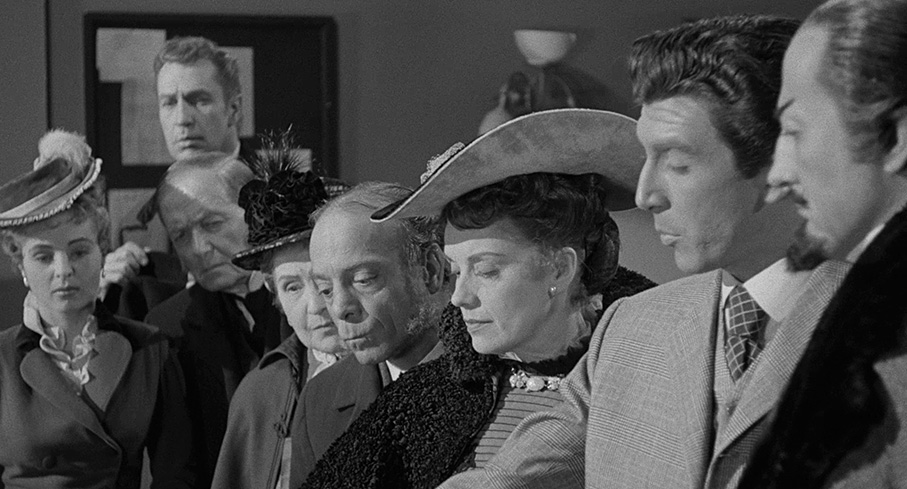
So how does The Mad Magician look in 3D on PlayStation VR? Really good. I've never been a 3D junkie and have tended to regard it as a gimmick, and while I suspect those behind the making of this film were of a similar opinion, that didn't stop cinematographer Bert Glennon – who also shot the 3D House of Wax the previous year – from creating compositions that really do come to life in three dimensions. The use of lighting and the arrangement of people and objects in frame gives real depth to scenes that you wouldn't automatically expect to pop from the screen in 3D, and the thankfully small number of shots staged purely to exploit the process (at one point Gallico pauses at the end of a trick, looks at the camera and sprays water at the audience in a manner that almost breaks the fourth wall) do have the desired effect. It's strikingly good and the image seemed to me to be every bit as crisp as on the 2D version, though the 3D process does have a sometimes peculiar impact on perspectives and an occasionally flattening effect on depth.
The Linear PCM 1.0 mono soundtrack has also been remastered and sounds far better than you might expect for a film of this age, with clear reproduction of dialogue, effects and music and no hissy trebles resulting from the inevitable but not punishing range restrictions.
Optional English subtitles for the hearing impaired are available.
Audio Commentary with Kevin Lyons and Jonathan Rigby
A busy and hugely enjoyable commentary from English Gothic and Landmarks in Horror Cinema author Jonathan Rigby and Encyclopaedia of Fantastic Film and Television website editor Kevin Lyons. We get information on the lead actors, screenwriter Crane Wilbur and director John Brahm, the various elements borrowed from The House of Wax, the influence of The Lodger (a version of which Brahm also directed), aspects of the script that hark back to the silent era, and plenty more. Both men clearly enjoyed the film but are not remotely precious about it and are happy to pick holes in the elements that they believe don't stand up to scrutiny, their favourite being the whole plot strand involving Gallico's disguises and the very idea that anyone could be fooled by his impersonation of Ormond. I get where they're coming from, but do think they're being unnecessarily harsh on a film whose makeup effects budget could likely only stretch so far – such criticism comes from a similar place that mocks all older horror movies because their gore effects are not photorealistic by modern standards. Suspension of disbelief, guys!
Three-Dimensional Magic (15:02)
Archivist Tom Vincent and Cinematographer Frank Passingham (Chicken Run, Kubo and the Two Strings) look at the film's use of 3D and its place within the cycle of 3D films of the early 1950s. Vincent in particular has some intriguing information about the long history of cinematic 3D, which goes right back to the origins of film as a medium, something briefly touched on in the commentary track as well.
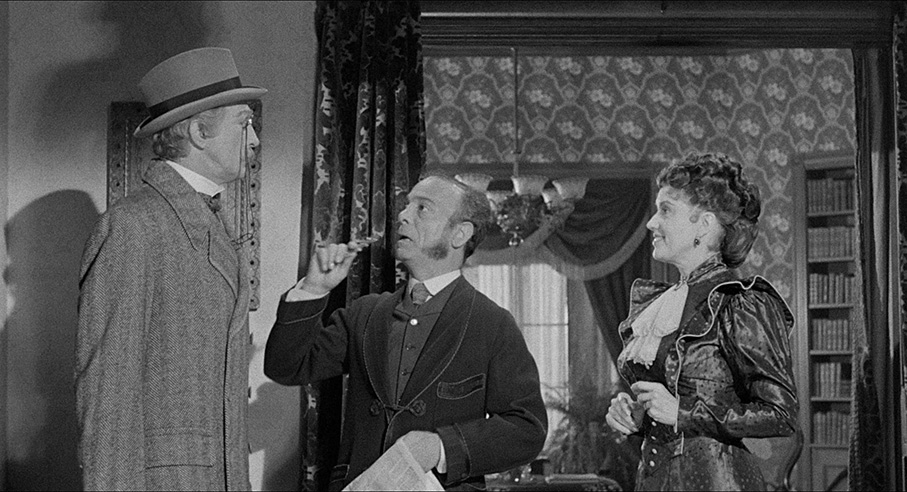
Super 8 Version #1 (8:34) and Super 8 Version #2 (16:22)
Two severely cut-down Super 8 editions of the film produced for home viewing back in the day. Version 1 is silent with burned-in subtitles to aid your comprehension of the massively cut-down plot, while the longer second version has a soundtrack whose quality seems way too good for a Super 8 release and I suspect has been edited down from the one the accompanies the main feature. Both are in anaglyphic 3D, a process that requires a pair of those glasses with one red and one cyan lens to see in action. As it happens, I have several pairs of these but they weren't much help, as the colour on both of the prints has seriously faded (I know it's a black-and-white film, but the process itself requires two overlaid, colour tinted images), which didn't give my glasses a whole lot to work with. It is worth noting that my colour vision is less than perfect and that could be a contributory factor here, but I also used lenses from these glasses to construct a makeshift ‘Ghost Viewer' for watching William Castle's 13 Ghosts from Indicator's William Castle at Columbia – Volume One Blu-ray set, whose image and colour were fully restored and the glasses worked fine there.
Theatrical Trailer (2:09)
"Hoax… or Horror? Magic… or Murder!!!" asks and exclaims the opening caption of a trailer that makes great play of the lethal nature of the buzz-saw trick (it even features a buzz-saw shaped wipe transition). It also describes Vincent Price as "that House of Wax man," and is unembarrassed about simply splashing the word "Weird!" across the screen to describe his character.
Image Gallery
32 screens of production stills, storyboard sketches (these are really good) and international posters.
Spooks! (1953) and Pardon My Backfire (1953) (15:47 and 15:59)
Two 3D short films released the year before The Mad Magician that are referenced in the Three-Dimensional Magic extra and feature famed comedy trio The Three Stooges in its Larry, Moe and Shemp incarnation. In Spooks!, the boys are running a private detective agency and hired to find a missing girl, who has been captured by a mad scientist named Dr. Jeckyl (want to guess what his assistant is called?), who intends to transfer her brain into the body of a spectacularly fake gorilla. In Pardon My Backfire, they are garage mechanics looking to make enough money to be able to afford to marry their girlfriends (who in that movie tradition are young enough to be their daughters) when three escaped criminals with a price on their collective head wheel their car in looking for repairs and fuel. There's none of The Mad Magician's more subtle use of 3D here, but seriously, what did you expect from these fellas? Everything anyone can lay their hands on is fired, thrown or poked at the camera, including water, fire, knives, cleavers, fists, fireworks, Moe's eye-poking fingers and, of course, custard pies. The 3D is as effectively rendered as in the main feature (these shorts were also remastered by Sony) with a similarly distorting effect on perspective, though if you're watching on a VR headset get ready to wince when Dr. Jeckyl pokes the needle of a bloody great syringe in your eye. I genuinely yelped at this. The Stooges are as silly and violent as ever, but Spooks! is more fun and makes more lively use of the 3D process, even if it does sometimes briefly stall the flow of action. Both films have optional English subs for the hearing impaired.
Booklet
Following the credits for the film, the booklet opens with a revealing essay by Kat Ellinger on real-life magical tricks deviser and builder Merv Taylor, whose work is featured in and crucial to The Mad Magician, despite the fact that he receives no credit on the film. Next up we have a short but useful piece on producer Brian Foy, followed by some extracts from director John Brahm's final interview, which was conducted in 1979 by film historian David Del Valle. There's some fun material from the film's original pressbook offering colourful suggests on how to exploit it ("Hosiery shops will welcome, and men will stop to gape at, the gorgeous leg art of Mary Murphy and Eva Gabor") and of course a few brief extracts from contemporary reviews. Credits for Spooks! and Pardon My Backfire are accompanied by a short essay on both by Jeff Billington. As ever, the booklet is illustrated with still and promotional artwork.
I enjoyed The Mad Magician far more than I thought I would, enough to not mind its occasional absurdity or bout of credibility-stretching logic. I remain unconvinced that 3D is an ideal way to watch movies, but despite the occasional show-it-off moment, this is a film that puts the process to surprisingly effective use. Terrific transfers of two versions of the film and some excellent extras, including two 3D Three Stooges shorts (would that be 3D Stooges?) all contribute to another first class release from Indicator that comes highly recommended, especially if you can watch it in 3D.
|